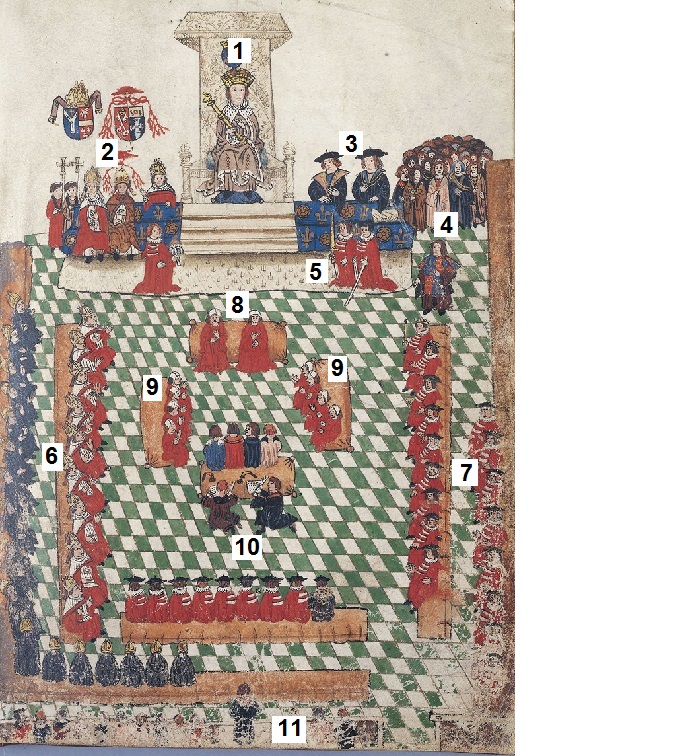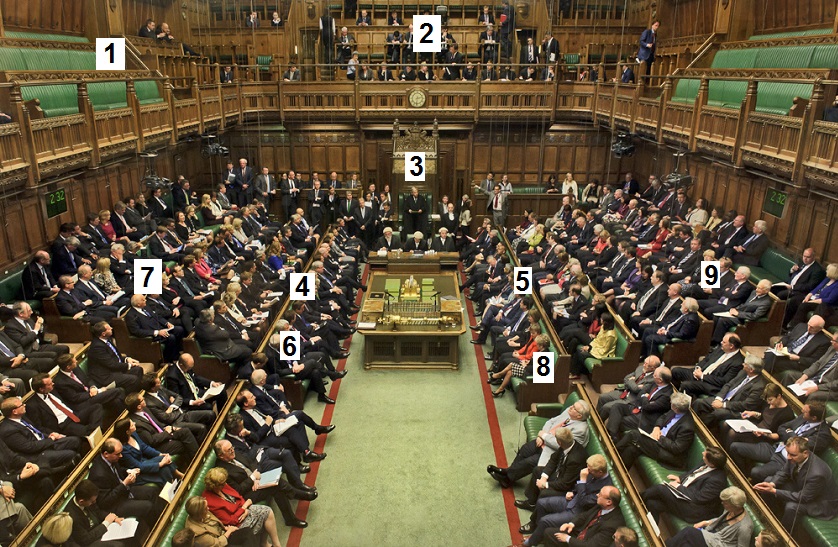
The Story of Parliament

Introduction
Britain is a democracy. Its laws are made by Parliament. Its people choose their government and have the right to change it five gears later if they do not like the way they are being ruled.
The story of Parliament began in the Middle Ages. Since then Britain's democracy has grown slowly, over hundreds of years. This webpage tells that story.
1066: The Great Council
Three times a year – at Christmas, Easter and Whitsuntide – William of Normandy called a Great Council.
The Great Council was made up of barons and bishops. The king asked them for advice, but he could ignore them if he wanted to.
1295: The Model Parliament
King Edward I (1272-1307) asked commoners (knights and rich townspeople), as well as barons, to attend Parliament. They met in the 'House of Commons'. The barons and bishops met in the 'House of Lords'. The king decided when Parliament would meet, and he could still ignore Parliament's advice.
1399: Freedom of speech
In 1399, Henry IV gave Parliament freedom of speech (MPs had the right to say whatever they wanted without fear of punishment).
Parliament's power was growing. After 1430 every freeman who earned more than £2 a year (quite a lot of money in those days) had the right to vote in elections.
1500: The Tudors
By the time of Henry VIII, the king was expected to pass an 'Act of Parliament' through the Parliament if he wanted to change the law; Henry VIII needed the support of Parliament in his conflict with the Pope.
1689 The Bill of Rights
In 1642, Parliament went to war against King Charles I. In 1649, after the war, Parliament executed him!
In the years after 1660, the first political parties grew up. They were known as the Tories (later to become the Conservative Party) and the Whigs (later to become the Liberal Party).
In 1688, Parliament invited William of Orange to come from Holland to become king. In return, William had to agree to the Bill of Rights (1689).
This said that:
• only Parliament could make laws;
• the king could not keep an army;
• the king could not raise his own taxes – each year he was given an income by Parliament, called the 'civil list';
• the people had the right to elect a new Parliament every seven years.
Britain became a 'constitutional monarchy' (there were limits to the power of the king).
1714: Cabinet government
George I, from Hanover in Germany, became king in 1714. He could not speak English. Instead of dealing directly with Parliament, he appointed a 'Prime Minister' to look after Parliament for him. The Prime Minister (not the king) chose a group of ministers who made up 'the Cabinet'. The party which won the most seats in Parliament at the general election ruled the country together with the king.
1832: The Reform Act
The number of people allowed to vote was increased in 1832 and 1867. In 1884, all men over 21 got the vote, and in 1872 the Ballot Act gave people the right to vote in secret. In 1918, women were given the vote for the first time.
Today: Democracy
The House of Commons makes the laws, and the House of Lords discusses them and suggests changes. The Queen merely signs the laws which Parliament makes.
Study this webpage, then answer the question sheet by clicking on the 'Time to Work' icon at the top of the page.
Links:
The following websites will help you research further:
The Story of Parliament:
• The timeline of the history of Parliament on the
www.parliament.uk
website
• The
BBC site
on the history of Parliament • The
BBC Bitesize site
on the history of the UK government through the ages
•
TimelinesTV
- video
![]()
1 The Tudor House of Commons
This painting shows Henry VIII opening Parliament in 1523. It is one of the first reliable pictures of Parliament (there are paintings which claim to show medieval parliaments, but they were drawn in Tudor times and clearly based on parliament in Tudor times).

In the Picture:
1. The King is seated in the throne in the centre.
To his right are:
2. the Chancellor and the two Archbishops.
On his left are:
3. two officers on the royal household (in black)
4. the Garter King of Arms (wearing the colourful tabard of a herald), with
5. the two leading noblemen of the realm (the Duke of Norfolk is holding his baton as Earl Marshal) in their red robes just in front of them.
6. The bishops and abbots are seated on the left, with
7. the nobles on the right.
The four woolsacks in the middle are a symbol of the wool trade; the officers of the Parliament sit there:
8. two Chief Justices,
9. the judges and Serjeants of the law, behind whom kneel
10. two clerks with their quills and inkpots.
At the bar of the House (at the bottom of the picture) stands:
11. the Speaker of the House of Commons.
2 The House of Commons Today

In the Picture:
1. Members' gallery;
2. Press Gallery;
3. The Speaker;
4. The Prime Minister;
5. Leader of the Opposition;
6. Government benches;
7. Government back-benchers;
8. Opposition benches;
9. Opposition back-benchers.